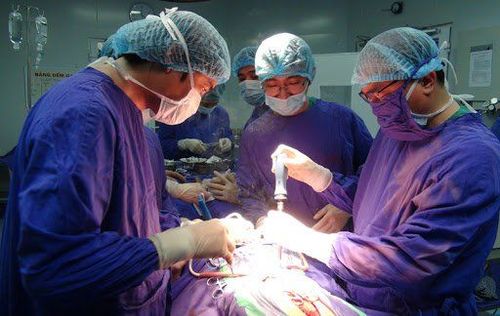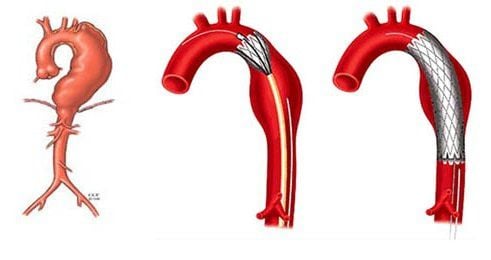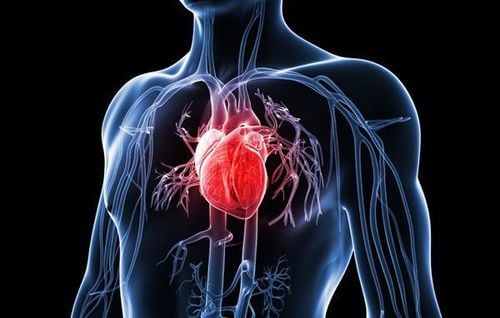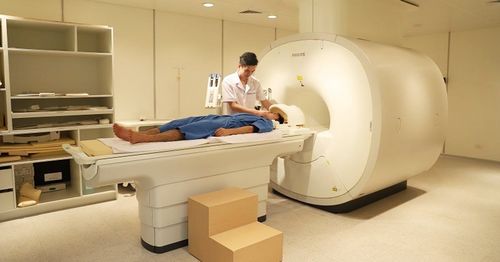This is an automatically translated article.
Pseudoaneurysm, also known as pseudoaneurysm, is easily confused with an aneurysm, because blood in the blood vessel also leaks and collects, causing swelling.
1. What is a pseudoaneurysm?
Pseudoaneurysm is a condition in which the artery wall is damaged, causing blood to leak and collect in the surrounding tissues outside the artery wall. Pseudoaneurysm is easily confused with aneurysms. However, pseudoaneurysm usually occurs when an injury affects an artery and damages or weakens the artery, but it can also be due to the artery weakening on its own.
Pseudoaneurysm often forms in patients with femoral artery perforation due to repeated catheterization or cardiac catheterization. In addition, it can also be seen in the cervical artery, brachial artery.
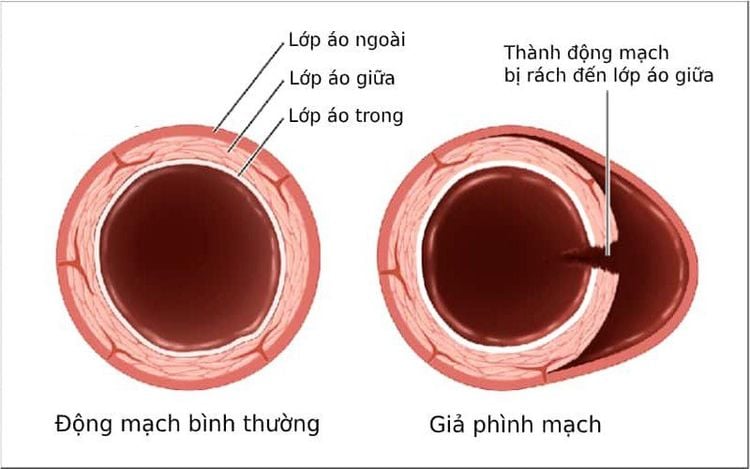
Giả phình động mạch
2. Causes of pseudoaneurysm
Pseudoaneurysms can occur spontaneously, but can also be caused by the following:
Cardiac catheterization: Heart disease treatments can cause perforation of an artery and lead to a pseudoaneurysm . Trauma: An accident or injury damages the aorta, causing blood to leak and collect in the tissues surrounding the artery wall. Complications of surgery: During or after surgery can cause complications that damage the artery wall. Infection: Infective pseudoaneurysm is rare, however, certain infections can cause this condition. Aneurysms: Patients who are suffering from an aneurysm may actually rupture or develop a pseudoaneurysm. In addition, certain factors such as perforation of the common femoral artery, taking antiplatelet drugs, anticoagulants or blood thinners can increase the risk of pseudoaneurysm formation and development.

Việc sử dụng các loại thuốc làm đông hay gây loãng máu cũng làm tăng nguy cơ gây bệnh
3. Symptoms of pseudoaneurysm
Pseudoaneurysm usually presents as a tender, tender, congested mass under the skin. These signs can sometimes be confused with an abscess. Therefore, to get an accurate diagnosis, the patient needs to provide a history of catheterization or experiencing an injury so that the doctor can take note of the condition.
4. Diagnosis of pseudoaneurysm
Diagnosis of pseudoaneurysms should be made when the patient has a history of arterial trauma, with methods such as:
Ultrasound: This is the most commonly used diagnostic tool showing dynamic blood flow. vessels into the pseudoaneurysm. X-ray or computed tomography: These techniques may also be ordered to closely evaluate pseudoaneurysms.
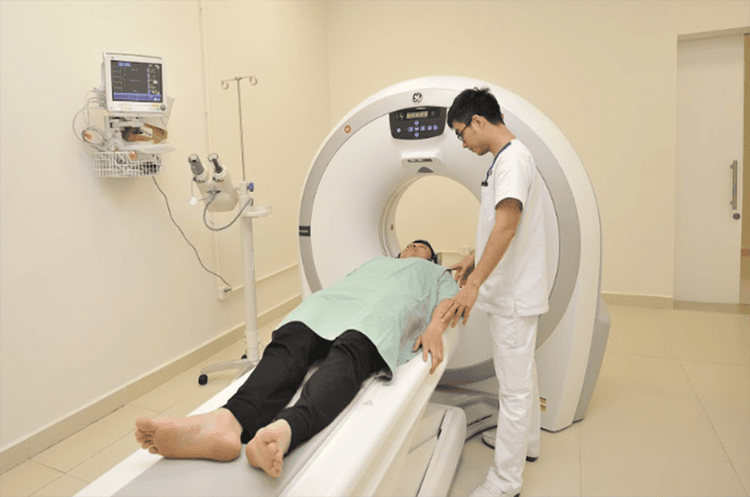
Chẩn đoán tình trạng giả phình bằng hình ảnh
5. Treatment of pseudoaneurysm
Depending on the size of the pseudoaneurysm, the doctor will prescribe the appropriate treatment.
Small size: After being diagnosed and confirmed, the patient is closely monitored by ultrasound to assess disease progression. During this period, the patient should avoid heavy work such as lifting heavy objects. Large size: The patient is indicated for immediate treatment. Surgery is the method of choice because of its good results. However, there are now less invasive methods such as ultrasound compression, ultrasound-guided injection of thrombin (a drug that forms blood clots), and surgical resection of the pseudoaneurysm, followed by repair of the artery wall. weakened or damaged. Pseudoaneurysm can occur in any affected artery, but is more common in the femoral artery. Surgery is the method of choice for the treatment of pseudoaneurysms.
Vinmec International General Hospital is the leading medical address for diagnosis and treatment of aortic pseudoaneurysm with modern Graft Stent placement. In addition, Vinmec's Cardiology Department always receives much praise and satisfaction from domestic and international customers, being pioneers in successfully applying the world's most advanced techniques in the treatment of diseases. Heart.
A team of highly qualified and experienced experts: qualified doctors from Master's to Professor's and Doctor's degrees, reputable in medical treatment, surgery, interventional cardiac catheterization. Intensive training at home & abroad. In particular, Prof. TS.BS Vo Thanh Nhan - Cardiology Director of Vinmec Central Park was recognized as the first and only expert in Vietnam to be awarded the "Proctor" certificate on TAVI. State-of-the-art equipment, comparable to major hospitals in the world: The most modern operating room in the world; The most modern silent magnetic resonance imaging machine in Southeast Asia; The CT machine has a super-fast scanning speed of only 0.275s/round without the use of drugs to lower heart rate; 16-sequence PET/CT and SPECT/CT systems help to detect early damage to cardiovascular organs even when there are no symptoms of the disease. Applying the most advanced intensive cardiovascular techniques in the world in treatment: Painless open heart surgery; Percutaneous aortic intervention without general anesthesia; Treatment of mitral regurgitation through the catheter has a success rate of 95%; Ventricular-assisted artificial heart transplantation for patients with end-stage heart failure prolongs quality of life beyond 7 years. Cooperating with leading Cardiology Centers in Vietnam and the world such as: National Heart Institute, Cardiology Department of Hanoi Medical University, University of Paris Descartes - Georges Pompidou Hospital (France), University of Pennsylvania (France), University of Pennsylvania (France), University of Pennsylvania (France). United States)... with the aim of updating the most modern cardiovascular treatments in the world. To receive examination and treatment with leading Vinmec cardiologists, customers please book an appointment online at the website or contact Vinmec Health System nationwide for service.
Please dial HOTLINE for more information or register for an appointment HERE. Download MyVinmec app to make appointments faster and to manage your bookings easily.





